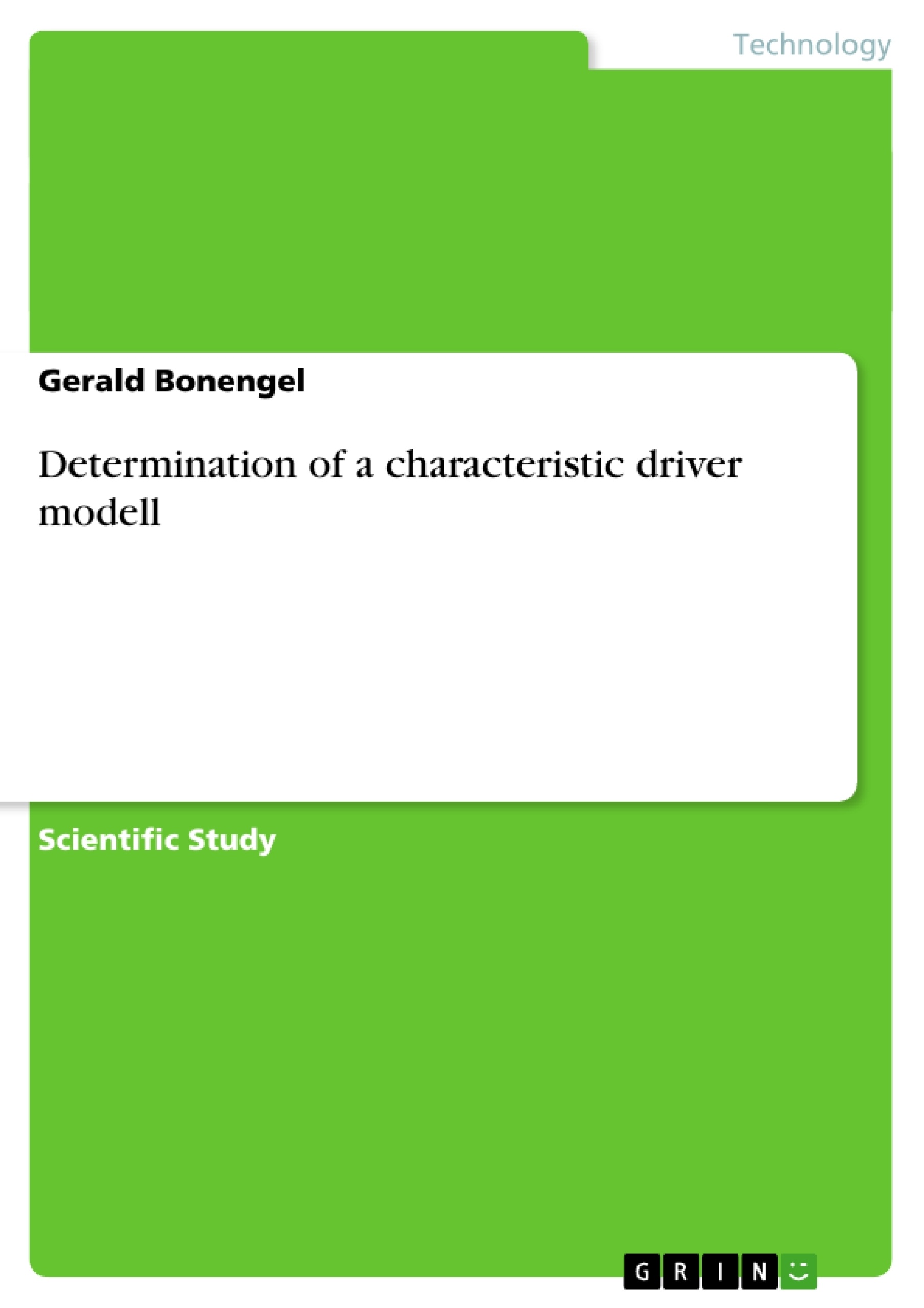There are various concepts to reduce the noxious emission in the area of mobility. For example actually the expansion of the electro-mobility, via hybrid drive to the point of fuel made of biomass is explored. To assess these concepts the operating conditions and operating areas of the vehicles in day to day use are crucial, as the concepts differ explicitly with regard to the range, power and driving characteristics. To be able to select the proper concept a driver’s model has to be defined, as the economical key data’s are in a strong correlation of this model. Via an everyday operating behavior performance data’s can be created, which can be used in “Hardware in the Loop” (HIL) engine test bench simulations.
The analyzed rides will be characterized with time-weighted and motor units as well as the allocations of the accessed engine torques and the engine rpm.
driver’s model;
Keywords: Hardware in the Loop; driving characteristics
Determination of a characteristic driver modell
Gerald Bonengel
J-Sport Automotive GmbH
Abstract—There are various concepts to reduce the noxious emission in the area of mobility. For example actually the expansion of the electro-mobility, via hybrid drive to the point of fuel made of biomass is explored. To assess these concepts the operating conditions and operating areas of the vehicles in day to day use are crucial, as the concepts differ explicitly with regard to the range, power and driving characteristics. To be able to select the proper concept a driver’s model has to be defined, as the economical key data’s are in a strong correlation of this model. Via an everyday operating behavior performance data’s can be created, which can be used in “Hardware in the Loop” (HIL) engine test bench simulations.
The analyzed rides will be characterized with time-weighted and motor units as well as the allocations of the accessed engine torques and the engine rpm.
driver’s model; Hardware in the Loop; driving characteristics
I. Introduction
The „Hardware in the Loop“- Simulation is describing a simulation-technic in which total-vehicle-concepts can be already in an early development stage evaluated in terms of function and logic. With the help of this simulation the physical, virtual components respectively the simulation model can be interrelated. Thereby it is possible to shorten the development times of components and models. Furthermore the concepts choice is superior and requires less financial input. Especially during the testing of new engine drive concepts, the number of feasible simulated concepts can be increased and the decision process optimized. The input parameter of a HIL-simulation can be for example taken as a driver profile, which is used as virtual driver-model.
II. Materials and Methods
For the detection of suitable specific values to generate the drivers profile a vehicle with data-recording-system has been used. The vehicle has been given to defined propositus for free usage in day to day life. Though all rides of the propositus have been recorded and analyzed. The characterization of the method of operation will be done on the basis of specific values, which are describing motor units such as engine torques, rpm and acceleration-pedal position as well as time-weighted data such as speed and acceleration. The vehicle data of each ride and as a total will be evaluated. To reach an adequate data volume for the evaluation, a recording time of at least 50 hours is required. For the test runs a vehicle of the compact class segment has been chosen, using a conventional engine, as they represent the strongest market segment (approx. 25%) of the total German car market [1]. As an outcome the result is representing a strong share of day to day usage and exposure.
The specific values, which are necessary for the determination of the motor-driven operating-point and the driving dynamic operating conditions, are taken during the rides with the help of a data-recorder. We have to differentiate between measures which can be recorded directly and those which are calculated indirectly from other measures. Direct measurements are:
- Engine rpm n
- Acceleration-pedal position aFp
- Speed v
- Brake actuation B
- Time t
Following measurements can be calculated:
- Vehicle acceleration a
- Driving distance s
- Time slice of brake actuation tbr
- Time slice of vehicle stoppage th
- Effective drive time td
- Engine torque M
- Effective intermediate pressure pme
- Engine performance P
- Wheel performance PRad
- inserted gear
The calculation of the measurements is done via mathematical and kinematical correlations. The acceleration and driving distance is the conduction respectively the integral of the speed in time. The engine measurements are defined by the pledged engine characteristics to reduce the measuring expenditure. This is done by entering the acceleration-pedal position aFp and engine rpm n to receive the associated torque measure. The areas between the supporting points are interpolated. Figure 1 is showing the engine characteristic with lines of consistent acceleration-pedal position aFp.
illustration not visible in this excerpt
Figure 1: Engine characteristic
To be able to conduct a correction respectively a valuation of the maximum deviations the correction-factor of the engine performance DIN 70020 has to be taken. The inserted gear can be calculated with engine rpm and speed of the vehicle.
[...]
- Citar trabajo
- Gerald Bonengel (Autor), 2012, Determination of a characteristic driver modell, Múnich, GRIN Verlag, https://www.grin.com/document/208434




